 |
 |
EASTER ISLAND - CHILE
 |
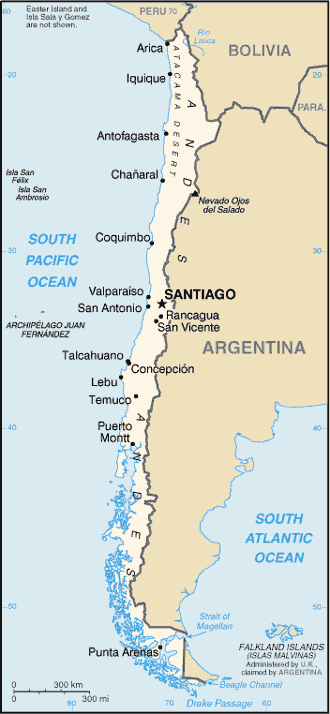 |
| Location: | Geographic coordinates: | Area: | Area - comparative: |
| Southern South America, bordering the South Pacific Ocean, between Argentina and Peru. | 30 00 S, 71 00 W | total: 756,950 sq km | slightly smaller than twice the size of Montana |
| Population: | Languages: | Capital: | Currency: |
| 15,823,957 | Spanish | Santiago | Chilean peso (CLP) |
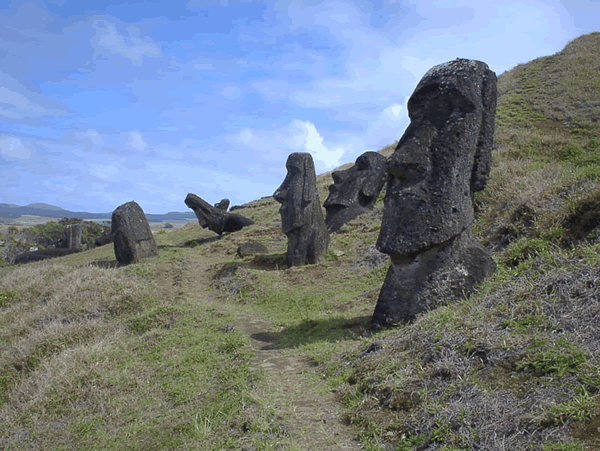

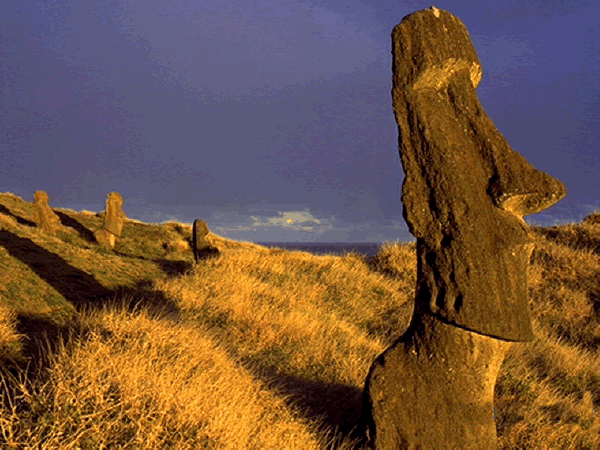
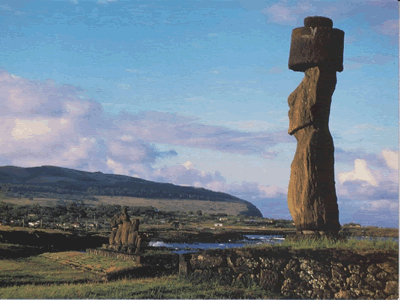
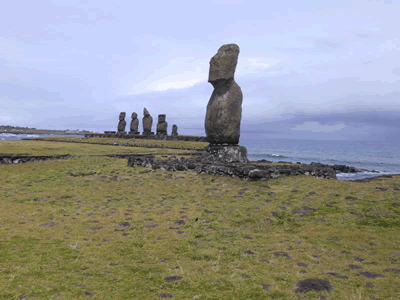
| Types of rocks: | The type of rock used to make these statues is basalt (Igneous rock). |
Located 2200 miles due west of Chile and 1200 miles east of Pitcairn Island, is a sixty-three square mile island formed eons ago by two volcanoes. Because a Dutch seaman, Jacob Roggeveen, came upon it on Easter Day, 1722, we know it on our maps as Easter Island.
Polynesians know it as Rapa Nui. By either name, Easter Island is renowned for the nine hundred massive carved statues known as Moai, some weighing more than fifty tons, which were erected centuries before lookouts on the Dutch ship spotted this speck alone on the Pacific horizon.
Modern DNA testing and carbon dating have answered many of the mysterious questions that have swirled over the history of the islandís early inhabitants and their seeming passion for constructing stone statues, all fundamentally the same in appearance. At that time the island was very hospitable. Fish and birds were plentiful, as was edible plant life. Much of the island was thickly forested, provided excellent habitat for the birds, as well as rich soil for the plant life. If anything, life on the island was too good. Moreover, it was finite.
Rich as the natural resources were, over-population, probably, resulted in their substantial depletion. Pollen records indicate the forests were endangered by 800 AD and likely disappeared in the 1400's. Most of the Moai were sculpted between 1000 and 1500 AD. The timber likely utilized to move them from their quarries on specially built roads could have resulted in the exhaustion of the forests.
This may explain why almost half of the Moai were still in the quarries. Speculation also suggests that those in the quarries were somehow imperfect, therefore simply abandoned. The largest Moai, found incomplete in a quarry, was 72 feet long and estimated to weigh 165 tons. Interestingly, an early researcher put its size at 65 feet and its weight at 270 tons. Of the two hundred which were actually erected, the largest was about 33 feet tall and weighed about 80 tons.
© Guillermo Rocha, P. G. / Brooklyn College Geology Department